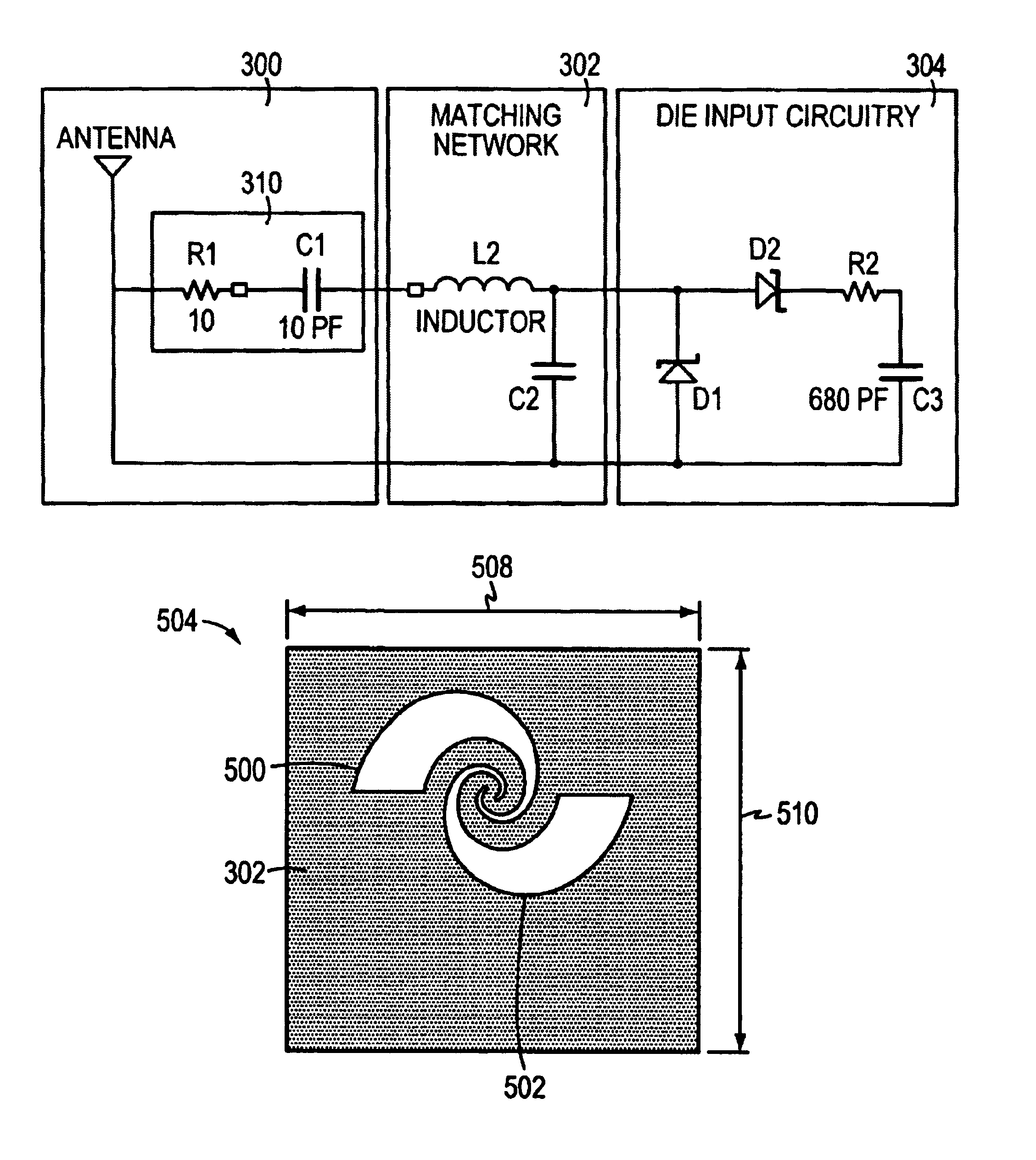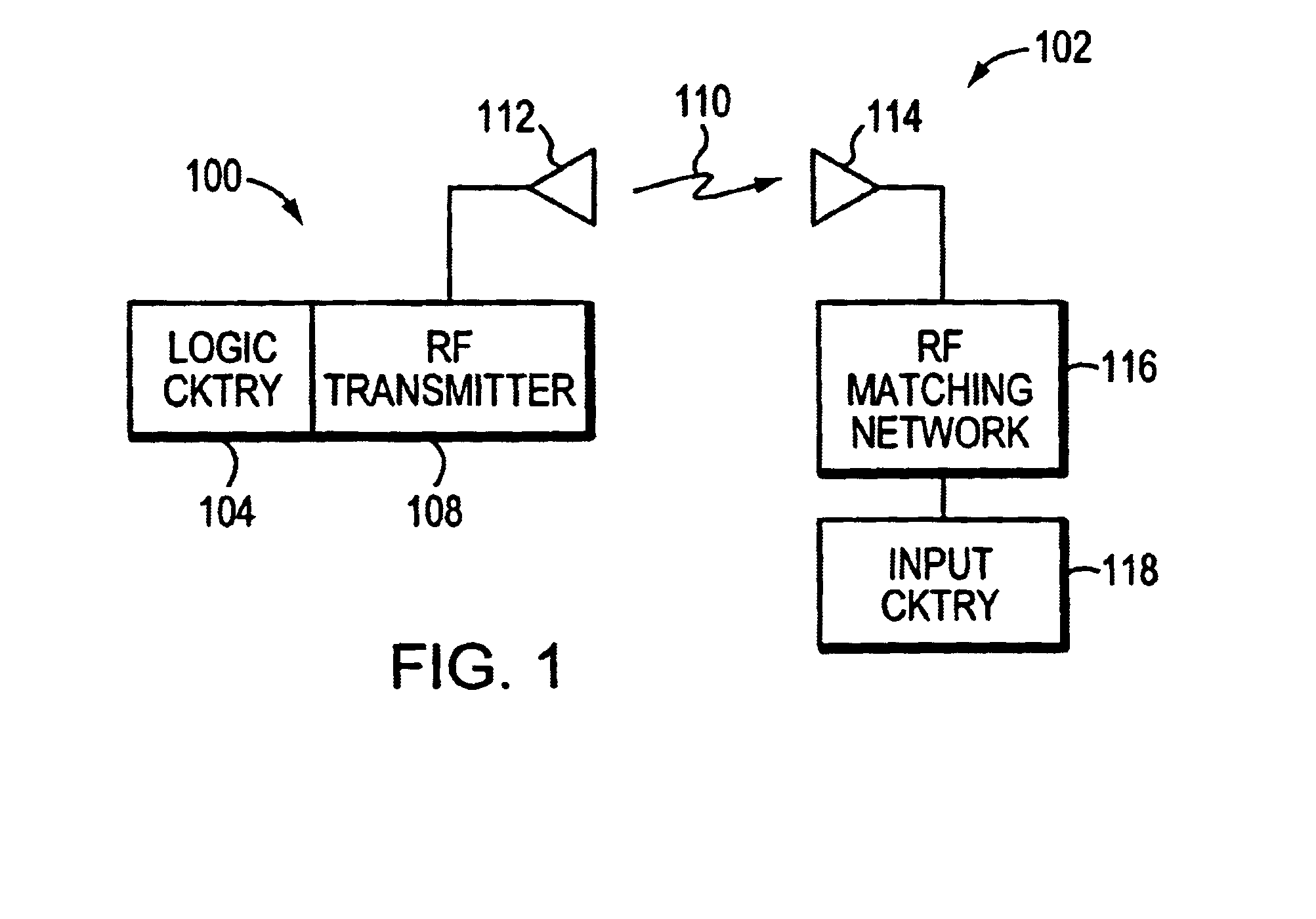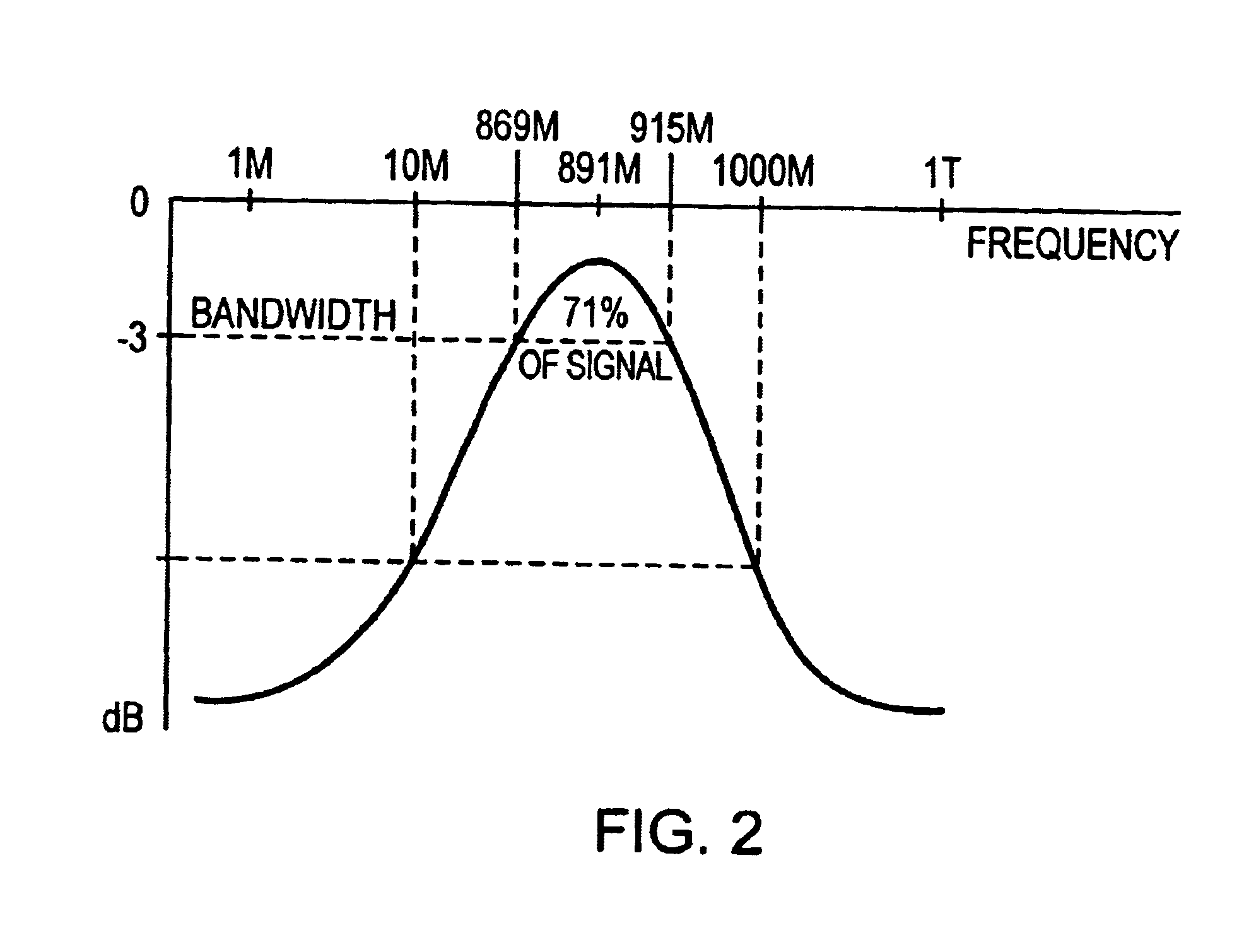RFID tag wide bandwidth logarithmic spiral antenna method and system
- Summary
- Abstract
- Description
- Claims
- Application Information
AI Technical Summary
Benefits of technology
Problems solved by technology
Method used
Image
Examples
Embodiment Construction
[0026]FIG. 1 is a basic block diagram of an illustrative RFID tag system. Here an interrogation station 100 generates an RF signal 108, usually a pulse signal generated by the logic circuit 104, that is transmitted 110 via an antenna 112 to a tag system 102. The RF pulse is received via an antenna 114 and an RF impedance matching circuit 116 as is known in the art, and, an input circuit 118. If the RF signal is strong enough, the input circuitry rectifies the RF signal and charges a capacitor that is used to power the tag system when the RF signal is low. As is known in the art, the tag circuit presents a load to the RF transmitter causing the RF transmitter power to increase in the presence of a tag. In one embodiment, as known in the art, the driving RF voltage signal is stepped up. That increase may be sensed by the logic circuitry 104 to indicate the presence of the tag. Other known techniques may used to generate and detect a tag.
[0027]FIG. 2 shows a frequency response for a tr...
PUM
 Login to View More
Login to View More Abstract
Description
Claims
Application Information
 Login to View More
Login to View More - R&D Engineer
- R&D Manager
- IP Professional
- Industry Leading Data Capabilities
- Powerful AI technology
- Patent DNA Extraction
Browse by: Latest US Patents, China's latest patents, Technical Efficacy Thesaurus, Application Domain, Technology Topic, Popular Technical Reports.
© 2024 PatSnap. All rights reserved.Legal|Privacy policy|Modern Slavery Act Transparency Statement|Sitemap|About US| Contact US: help@patsnap.com










